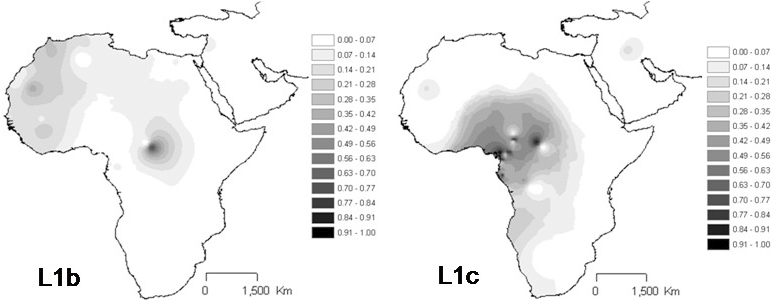Oceanicpuppy
Superstar
your maternal haplogroup is L1c2.
As our ancestors ventured out of eastern Africa, they branched off in diverse groups that crossed and recrossed the globe over tens of thousands of years. Some of their migrations can be traced through haplogroups, families of lineages that descend from a common ancestor. Your maternal haplogroup can reveal the path followed by the women of your maternal line.
Origin and Migrations of Haplogroup L1c
Haplogroup L1c originated about 78,000 years ago, most likely in western-central Africa. Today, it is particularly common among the Bantu-speaking populations of central Africa and the forest-dwelling Pygmies. The ancestral population of these two groups probably diverged about 60,000 to 70,000 years ago as the climate became drier and the African rainforest fragmented. When the forest fragmented, the population split and each subsequently developed unique branches of L1c.
While L1c is relatively rare in Africa outside its region of origin, a few different L1c branches have participated in several migrations throughout the continent. Caught up in the expansion of Bantu-speaking farmers about 3,000 years ago, members of L1c have trickled down both the western and eastern coasts into southern Africa. Their maternal lines have also expanded from Cameroon with Bantu-speaking populations traveling northwest through Mali and into far western Africa. But the most dramatic migration has been the passage of L1c individuals across the Atlantic Ocean to the Americas during the slave trading era of the 16th-19th centuries.
Your maternal haplogroup, L1c2, traces back to a woman who lived approximately 38,000 years ago.
That's nearly 1520 generations ago! What happened between then and now? As researchers and citizen scientists discover more about your haplogroup, new details may be added to the story of your maternal line.
Last edited:



